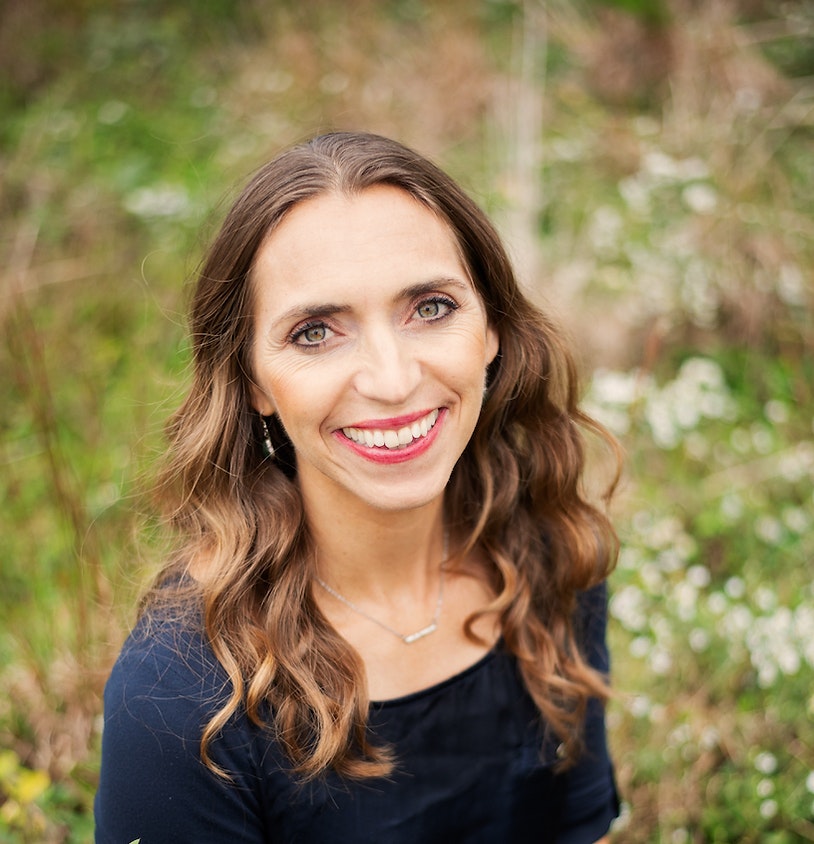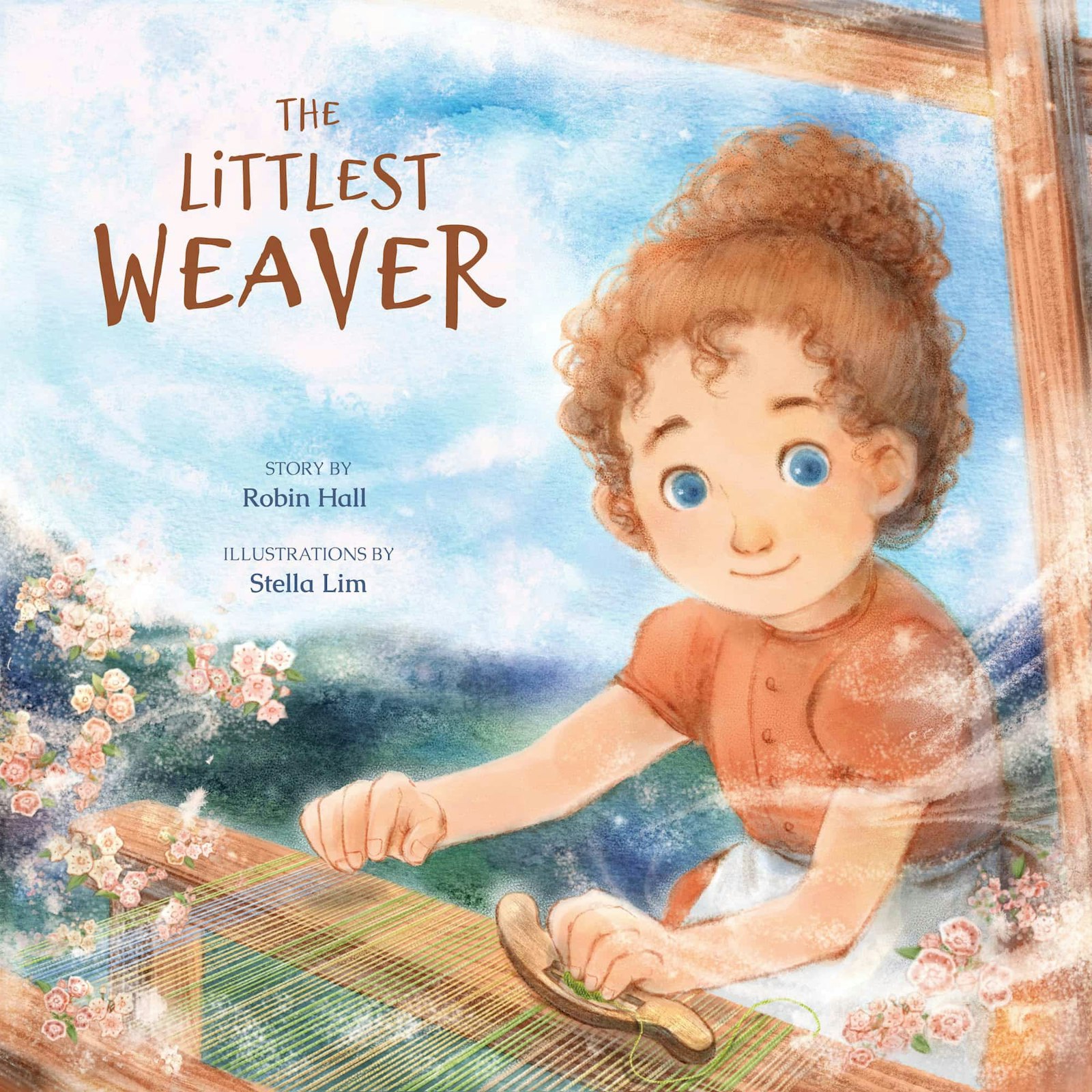I love reading to my children; if the books contain weaving, so much the better! I still remember when Tom Knisely’s incredible book The Weaver’s Surprise came out. I’m fairly certain Big Kid and I read it together a hundred times, if not more! Finding a thoughtful, beautiful book about weaving for kids isn’t always easy, so I was excited to find out about The Littlest Weaver by Robin Hall.
The Littlest Weaver is a lovely story with beautiful illustrations. In it, a girl named Laurel weaves rugs with her father. She then uses her talent for rug weaving to help a newcomer deal with the grief that comes from losing a loved one. The story is touching and a good reminder that weaving is so much more than just the cross of warp and weft.
Also, I’d be remiss to not mention the gorgeous illustrations that add an ethereal quality to the book. I was lucky enough to get to talk to Robin and ask her a few questions.

Can you tell us about your background with fiber arts and crafts?
I have been playing with fiber since my Grandpa Robinson taught me to knit when I was 10 years old. I also played with tapestry weaving a bit when I was younger but didn't get back into weaving until 2017, when I took up basket weaving and became a bit obsessed. It was researching this book that brought me to the North Carolina Southern Highlands weaving traditions and my first multi-shaft floor loom. I weave on a counterbalance loom like Laurel, my main character, would have used. I also have a countermarch loom, a Glimakra Standard. I'm still new to multi-shaft weaving and am excited to keep learning and creating. I’m a member of the Triangle Weavers Guild and Jane Stafford’s Guild, and I took a course at Vävstuga because I'm part Swedish and wanted to learn how my ancestors wove.
What was your inspiration for this book?
In 2011, after the earthquake and tsunami in Tohoku, Japan, I heard a story of a man who tried to get back to rescue his family but couldn’t, and they were all lost at sea. His story stuck with me. I needed to tell the story of what happened to him after and to give him closure and perhaps a bit of hope.
I had been weaving Appalachian baskets and learned about overshot weaving and coverlets and knew my little story would be perfect for my beautiful state of North Carolina. Though unstated, to me, the “great storm” mentioned in the book is the hurricane of 1899 that destroyed Diamond City on the Crystal Coast. I also wanted to show that little people can make big differences, and they don’t have to do huge things to make that difference. Art is healing in my life, and I knew it would be healing both for my main character, Laurel, and for the sad man who moved “far from the sea to the hills and hollers of Appalachia’s Great Southern Highlands.”
How did you research the book?
Besides finding all the books I could and using my local library and librarians, I also visited the Southern Highlands. I was really lucky to communicate with the weaver in residence at the John C. Campbell Folk School and for them to introduce me to Susan Morgan Leveille. She is a weaver and historian and part of the Morgan family of artisans who created Penland School. She answered my many, many questions and helped me to be accurate for the time period and the weaving. She told me stories of her family, of times past, of often-unique shuttles whittled by family members. It’s a picture of a shuttle that we found in an old book on weaving that made it to the front cover of my book. Susan even looked at early illustrations from Stella Lim and helped us to portray the weaving tradition accurately. Part of my research also led to me taking weaving classes and buying my own loom so I could understand what it is to weave. I have grand plans to weave my own coverlet in the not-too-distant future.
What do you love best about your book, and what do you hope families get from the story it tells?
This book is a love letter to my home state, to the people and the places, and to the power of art to create healing and joy. I’m overjoyed that with Stella Lim’s art, we were able to create this picture book together. I hope families will read this book together and be reminded of the power of art to heal. I hope that they’ll remember that small acts do matter and that small humans can be a massive help, and I hope it makes them want to create art. As I’ve been traveling so far and sharing my book, it’s been a joy to teach weaving to young readers. There is something about creation that fills me. I hope it fills readers, too. I wouldn’t mind if The Littlest Weaver created more weavers in our world!
The illustrations in the book are incredible—can you tell us a bit about the process of bringing this traditional weaving and the tools to life?
I can’t take credit for the breathtaking artwork. The illustrator, Stella Lim, worked really hard to correctly portray Appalachian traditional weaving. Though we did not communicate (authors and illustrators aren’t supposed to talk during the illustration process), I was able to share many images of the Southern Highlands, and, of course, as I mentioned above, Susan Leveille looked at all the pictures with weaving to make sure Stella was on track.
Many thanks to Robin and her publisher, Familius, for agreeing to let us feature this beautiful book and taking the time to talk to me. The Littlest Weaver is available online or at your favorite local bookstore, and you can learn more about Robin at her website.
Happy Weaving (and Reading),
Christina

